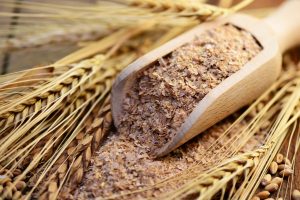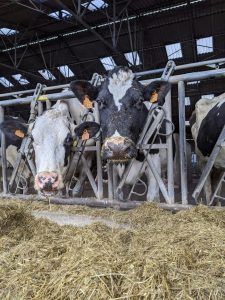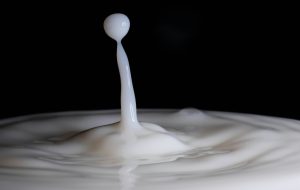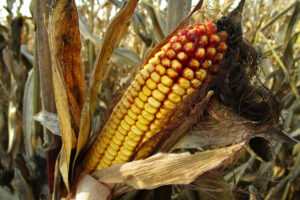Álvaro García
The balance of dietary cations and anions has long been known to influence metabolic status, feed intake, and milk production in dairy cattle. Early observations showed that rations high in sodium (Na⁺) or potassium (K⁺) improved appetite and performance, while diets rich in chloride (Cl⁻) or sulfur (S²⁻) reduced intake. These findings spurred research in the mid-20th century that laid the foundation for understanding acid–base balance in ruminants.
In the 1960s and 1970s, Dishington (1975) demonstrated that adding anionic salts induced mild metabolic acidosis, which improved calcium mobilization at calving and lowered milk fever risk. Around the same time, Block (1984) in North America confirmed that manipulating dietary minerals could shift dry matter intake, milk yield, and overall metabolic health. From this work emerged the dietary cation–anion difference (DCAD) concept, a formula expressing the balance of major ions in the diet and its predictable effects on systemic pH.
By the 1980s and 1990s, DCAD became central to transition cow nutrition, supporting both lactation performance and prevention of periparturient disorders. Today, it is a practical management tool on progressive dairy farms, illustrating how nutritional physiology translates directly into improved productivity and animal well-being.
The DCAD concept
The dietary cation–anion difference (DCAD) is defined as the balance between major cations and anions in the ration, often expressed as:
DCAD = (Na⁺ + K⁺) – (Cl⁻ + S²⁻)
When Na⁺ and K⁺ exceed Cl⁻ and S⁻, DCAD is positive; when Cl⁻ and S²⁻ dominate, DCAD is negative. This balance directly affects systemic acid–base status. High DCAD diets induce mild metabolic alkalosis, while low or negative DCAD diets favor metabolic acidosis. By manipulating this balance, nutritionists can shift blood pH and associated physiological responses in predictable ways.
Changes in DCAD alter the acid–base equilibrium in the cow. Positive DCAD values increase blood bicarbonate concentrations and raise urine pH, reflecting alkalosis. Conversely, negative DCAD values reduce blood bicarbonate and lower urine pH, creating acidosis. These shifts in systemic pH influence not only appetite and milk yield but also mineral metabolism, particularly calcium homeostasis during the transition period.
Implications for transition cows
One of the main applications of DCAD manipulation is preventing hypocalcemia around calving, when calcium demand for colostrum and milk rises sharply. Feeding negative DCAD diets during the dry period improves tissue responsiveness to parathyroid hormone, enhancing calcium mobilization from bone and absorption in the gut. Studies consistently show that this reduces both clinical and subclinical milk fever and improves postpartum performance. Beyond calcium metabolism, DCAD also influences intake and milk yield: positive DCAD diets during lactation promote consumption and production, while negative DCAD diets prepartum strengthen calcium status and reduce periparturient disease. Research from Block (1984), Tucker et al. (1988), and others confirms that aligning DCAD strategy with stage of production—positive during lactation, negative prepartum—optimizes health and productivity.
Applying DCAD on farm requires careful balance, as elevated levels of anionic salts can reduce feed intake despite their effectiveness. While commercial supplements with better palatability are available, producers prefer to adjust rations through feedstuff selection. High-potassium forages like alfalfa raise DCAD, whereas straw, corn silage, beet pulp, and certain grains lower it. Replacing part of an alfalfa-based ration with these ingredients reduces potassium intake, induces the mild acidosis needed for calcium mobilization, and improves both cost efficiency and use of on-farm resources—highlighting the value of forage testing and mineral profiling in transition cow diets.
Worked example: lower DCAD by replacing alfalfa with wheat straw.
Step 1 — DCAD formula and quick conversion factors
DCAD (mEq/kg DM) = (Na⁺ + K⁺) − (Cl⁻ + S²⁻), where
- K mEq/kg ≈ 255.7 × %K
- Na mEq/kg ≈ 434.8 × %Na
- Cl mEq/kg ≈ 282.1 × %Cl
- S mEq/kg ≈ 625 × %S (S has valence 2 → Eq wt ≈16)
Step 2 — Typical ingredient mineral profiles (illustrative)
- Alfalfa hay: K 2.5%, Na 0.20%, Cl 0.40%, S 0.25%
DCAD = (255.7×2.5 + 434.8×0.20) − (282.1×0.40 + 625×0.25)
= (639.3 + 87.0) − (112.8 + 156.3) = ~457 mEq/kg (≈ 4.57 mEq/100 g) - Wheat straw: K 0.80%, Na 0.05%, Cl 0.15%, S 0.15%
DCAD = (255.7×0.8 + 434.8×0.05) − (282.1×0.15 + 625×0.15)
= (204.6 + 21.7) − (42.3 + 93.8) = ~90 mEq/kg (≈ 0.90 mEq/100 g) - Corn silage: K 1.20%, Na 0.02%, Cl 0.25%, S 0.20%
DCAD = (255.7×1.2 + 434.8×0.02) − (282.1×0.25 + 625×0.20)
= (306.8 + 8.7) − (70.5 + 125.0) = ~120 mEq/kg (≈ 1.20 mEq/100 g)
(Again: these are realistic ballpark values; use your forage reports for decisions.)
Step 3 — Ration before and after the swap
Original prepartum forage base (10 kg DM):
- 6 kg alfalfa + 3 kg corn silage + 1 kg “neutral” concentrate (assume ~0 DCAD for simplicity)
Ration DCAD = (6×457) + (3×120) + (1×0) all / 10 = (2742 + 360 + 0) / 10 = ~310 mEq/kg (≈ 3.10 mEq/100 g)
After replacing 2 kg alfalfa with 2 kg wheat straw:
- 4 kg alfalfa + 2 kg wheat straw + 3 kg corn silage + 1 kg neutral concentrate
Ration DCAD = (4×457) + (2×90) + (3×120) + (1×0) all / 10 = (1828 + 180 + 360 + 0) / 10 = ~237 mEq/kg (≈ 2.37 mEq/100 g)
Net effect: DCAD drops by ~73 mEq/kg (≈ 0.73 mEq/100 g), often enough to meaningfully move close-up urine pH downward toward the target range without adding chloride/sulfate salts.
Measuring success
To monitor the effectiveness of anionic salt administration in dairy cows, urine pH testing offers a simple, dependable, and affordable approach. This method helps assess whether the diet is successfully inducing the intended mild metabolic acidosis before calving.
Urine samples are collected by gently stimulating the cow to urinate—usually by massaging the vulva or escutcheon area—then catching midstream urine in a clean container. pH test strips, which are widely available from veterinary supply stores, livestock supply co-ops, and online retailers like Amazon or Valley Vet, are then used to measure urine acidity. It is important to select strips with a pH range of 4.5 to 9.0 and a color chart with at least 0.5 pH unit increments for accuracy.
To perform the test, a strip is dipped briefly into the urine sample. After 30 to 60 seconds, the resulting color on the test pad is compared against the manufacturer’s color chart. Each color corresponds to a specific pH value. A yellow to orange color typically indicates a pH between 5.5 and 6.5, which reflects effective acidification. For Holstein cows, the ideal range is 6.0 to 6.5, while Jerseys benefit from a slightly lower pH of 5.5 to 6.0. A green or blue hue indicating pH values above 6.8 suggests insufficient dietary acidification and may warrant an adjustment in the anionic salt intake or overall DCAD (Dietary Cation-Anion Difference) formulation.
Initial testing should be done daily when the diet is first introduced, tapering two to three times per week as the herd stabilizes. Regular monitoring helps maintain optimal prepartum metabolic status, reducing the incidence of clinical and subclinical hypocalcemia.
Practical notes for doing this on-farm.
- Evaluate first: Base decisions on wet-chem mineral analyses (K, Cl, S, Na vary a lot, especially K in forages).
- Target K control: The biggest DCAD lever in forages is potassium. Avoid high-K lots (lush alfalfa/grass) in the close-up pen.
- Use “structural balancers”: Wheat straw (extremely low K) and some low-K corn silages are your friends; they also help manage energy density.
- Mind fiber & energy: When adding straw, ensure peNDF is adequate and adjust starch/ME so DMI does not suffer.
- Magnesium supply: Keep Mg ~0.45–0.50% of DM (often via MgO) to support PTH sensitivity in low-DCAD programs—this does not require chloride/sulfate salts.
- Monitor response: Check urine pH (goal ~6.0–6.5 for partial acidification; ~5.5–6.0 for fuller acidification) and track DMI and fresh-cow health.
Conclusion
The development of DCAD from early mineral balance trials to modern precision nutrition is a major success in dairy science. While anionic salts remain effective in reducing hypocalcemia, their use can be limited by palatability, cost, and reliance on purchased inputs. Strategic ration formulation using the natural mineral variation in forages, silages, and byproducts offers a practical alternative, lowering costs and improving feed acceptance. Forage testing and mineral profiling are essential to guide these adjustments. Rather than replacing salts entirely, combining forage-based strategies with targeted supplementation creates a flexible, resource-efficient approach that enhances cow health, productivity, and long-term sustainability.
The full list of references used in this article is available upon request.
© 2025 Dellait Knowledge Center. All Rights Reserved.









